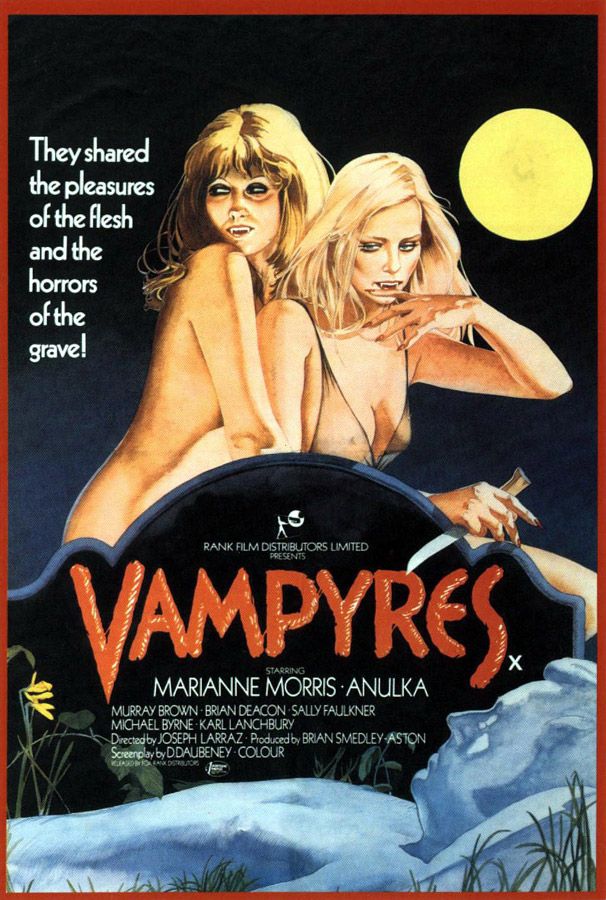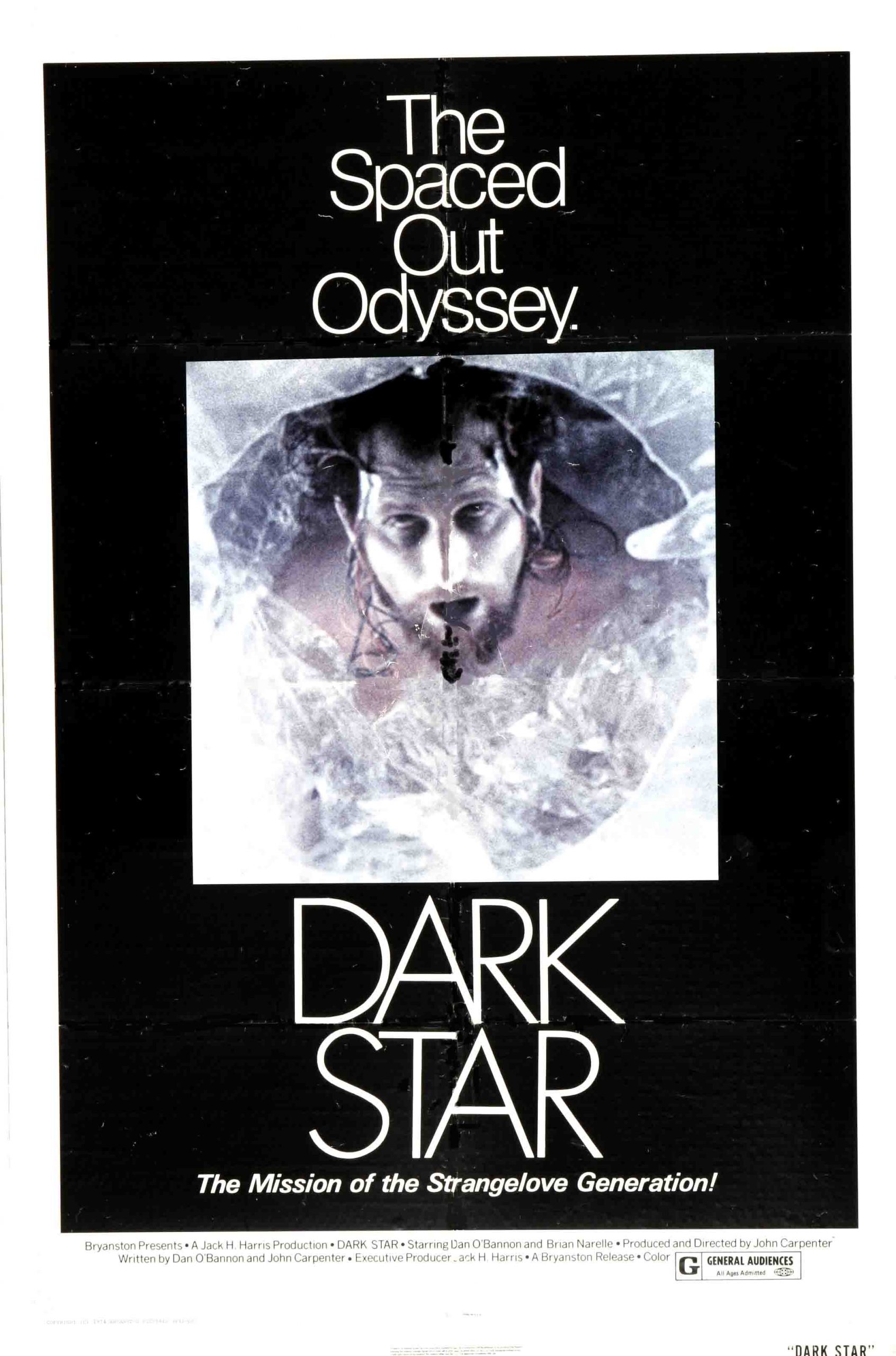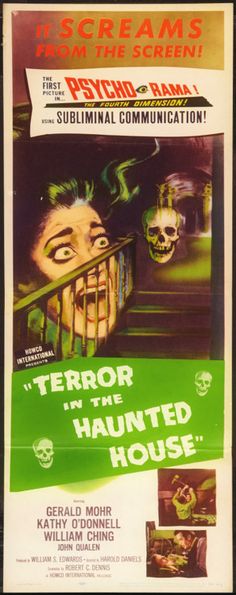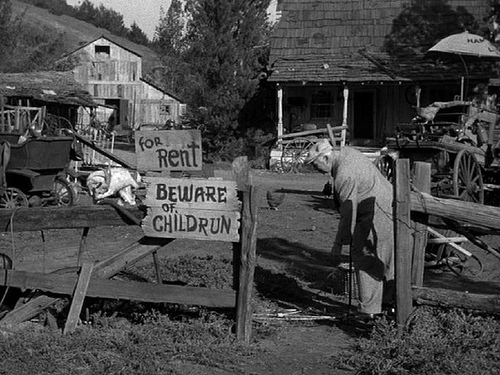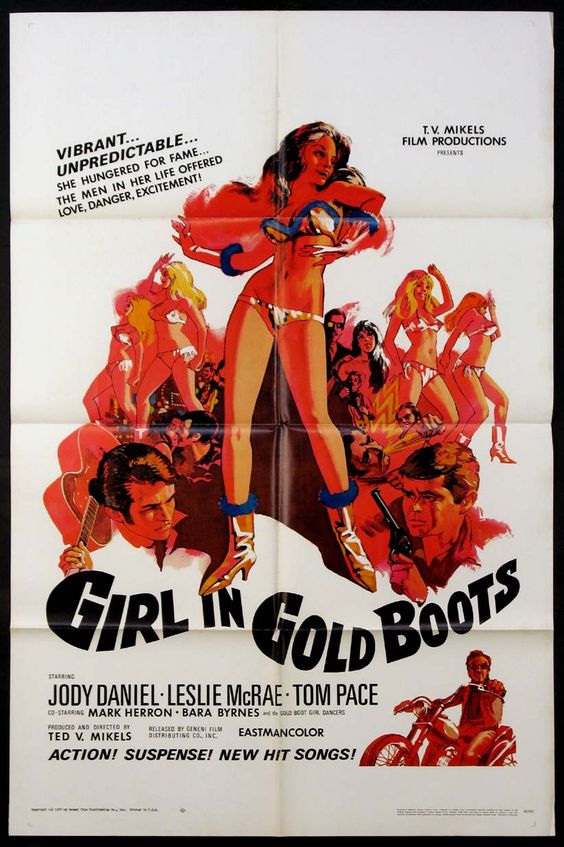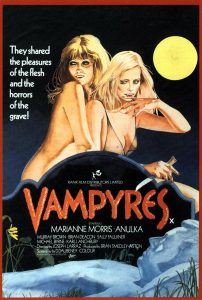
A motorist (Murray Brown) is lured to an isolated country house inhabited by two beautiful young women (Marianne Morris and Anulka) and becomes enmeshed in their free-spirited sexual lifestyle, but his hosts turn out to be vampires with a frenzied lust for human blood…
Taking its cue from the lesbian vampire cycle initiated by maverick director Jean Rollin in France, and consolidated by the success of Hammer’s “Carmilla” series in the UK, Jose Ramon Larraz’ daring shocker VAMPYRES pushed the concept of Adult Horror much further than British censors were prepared to tolerate in 1974, and his film was cut by almost three minutes on its original British release. It isn’t difficult to see why! Using its Gothic theme as the pretext for as much nudity, sex and bloodshed as the film’s short running time will allow, Larraz (who wrote the screenplay under the pseudonym ‘D. Daubeney’) uses these commercial elements as mere backdrop to a languid meditation on life, death and the impulses – sexual and otherwise – which affirm the human condition.
Shot on location at a picturesque country house during the Autumn of 1973, Harry Waxman’s haunting cinematography conjures an atmosphere of grim foreboding, in which the desolate countryside – bleak and beautiful in equal measure – seems to foreshadow a whirlwind of impending horror (Larraz pulled a similar trick earlier the same year with SYMPTOMS, a low-key thriller which erupts into a frenzy of violence during the final reel). However, despite its pretensions, VAMPYRES’ wafer-thin plot and rough-hewn production values will divide audiences from the outset, and while the two female protagonists are as charismatic and appealing as could be wished, the male lead (Brown, past his prime at the time of filming) is woefully miscast in a role that should have gone to some beautiful twentysomething stud. A must-see item for cult movie fans, an amusing curio for everyone else, VAMPYRES is an acquired taste. Watch out for silent era superstar Bessie Love in a brief cameo at the end of the movie.
